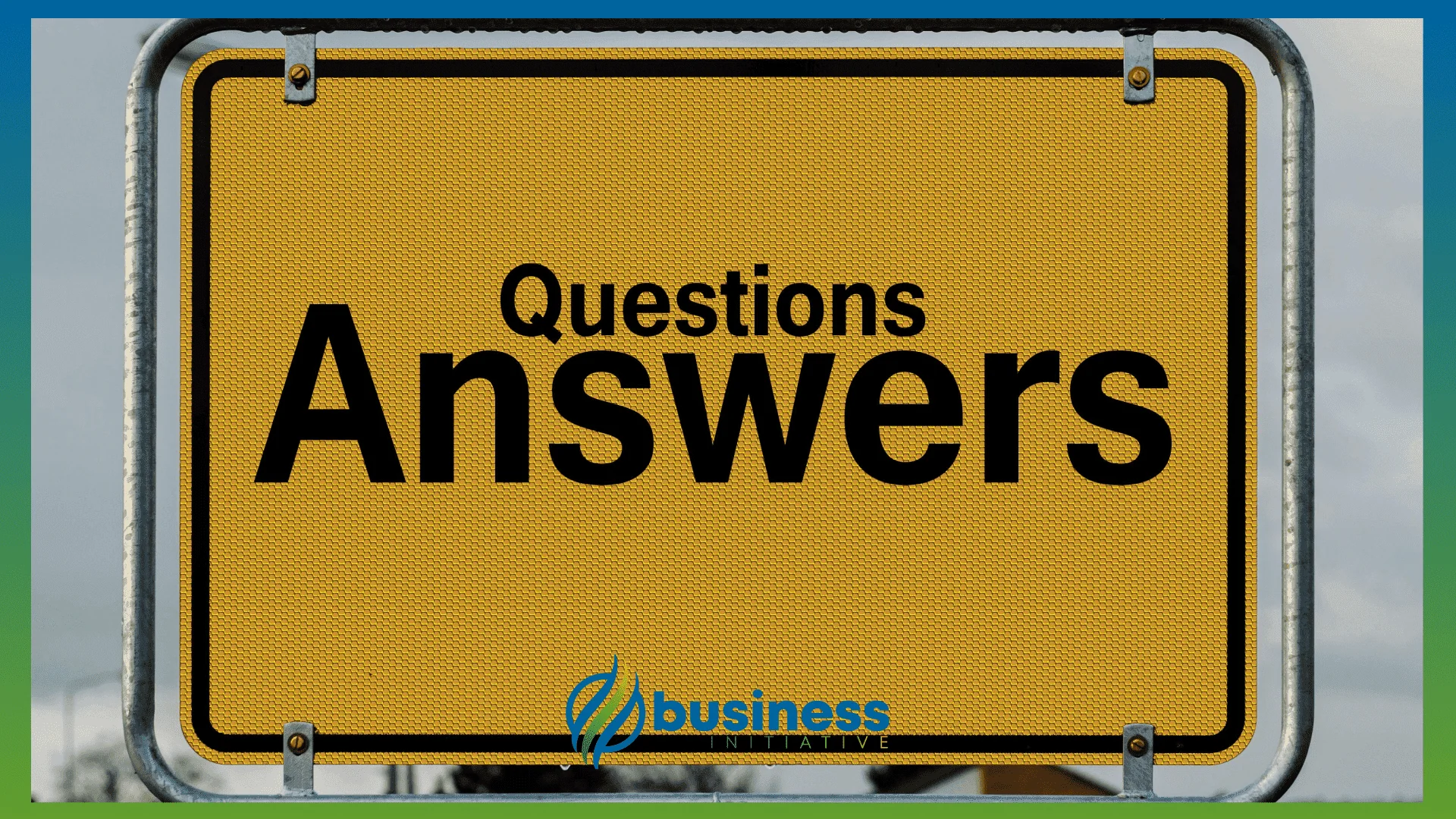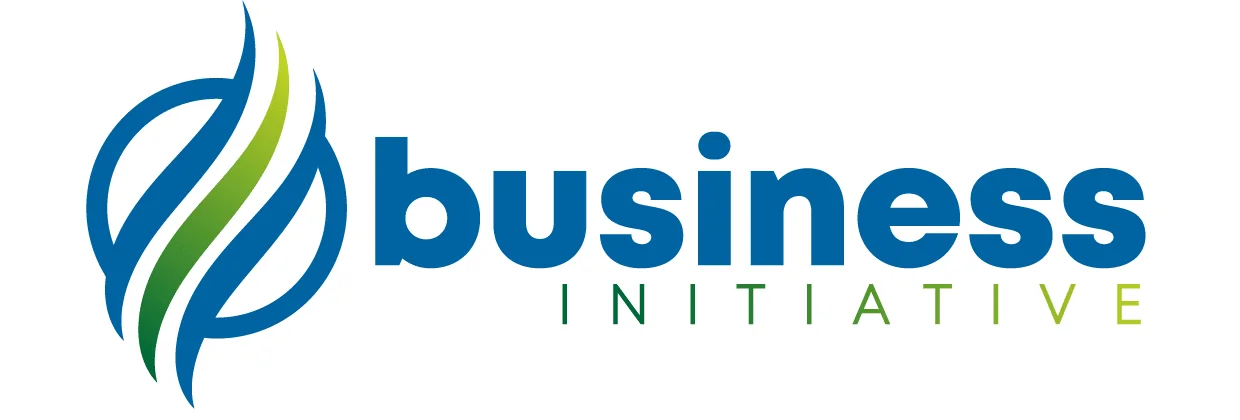Setting the right price for your products or services is challenging.
You want to stay competitive but also make a profit.
Many pricing strategies are complex and difficult to manage.
Cost-plus pricing is simple and highly effective!
It focuses on covering your costs and adding a fair profit margin, helping you maintain healthy profit margins with ease.
 Key Takeaways
Key Takeaways
- Cost-plus pricing ensures you cover all costs and earn a consistent profit by adding a standard markup.
- This pricing strategy is simple, transparent, and easy to implement, making it suitable for any business size.
- Combining cost-plus pricing with value-based pricing maximizes profitability by reflecting both costs and perceived customer value.
- Regularly review and adjust your pricing to respond to market changes and maintain profitability.
- Use tools like QuickBooks and FreshBooks to accurately track costs and ensure precise pricing calculations.
This article provides business owners with actionable insights into implementing a cost-plus pricing strategy to maximize profit margins.
We’ll explore the steps to set up cost-plus pricing, highlight its advantages, and share real-world examples and tips.
By the end, you’ll be equipped to enhance your pricing strategy and boost your profitability.
Setting the right price isn’t just about numbers.
Many business owners rely on intuition rather than data, leading to prices that are too low or too high.
Cost-plus pricing offers a simple, data-driven solution.
By calculating your costs and adding a profit margin, you ensure prices that maintain profitability while staying competitive.
 Table of Contents
Table of Contents
Cost-plus pricing is straightforward: cover your costs and add a profit.
This method eliminates guesswork and provides a clear pricing framework.
Many successful businesses use cost-plus pricing because it’s easy to implement and maintain.
According to a study by OpenView Partners, 10% of companies use cost-plus pricing as their primary pricing strategy because of its simplicity and ease of implementation.
It offers a stable foundation for financial planning and helps avoid underpricing or overpricing.
This article demystifies cost-plus pricing and provides a step-by-step guide to implement it in your business.
We’ll discuss how to calculate your costs, determine a profit margin, and set prices reflecting the true value of your offerings.
We’ll also share practical tips, tools, and examples.
By adopting cost-plus pricing, you can ensure consistent profit margins, enhance financial stability, and position your business for long-term success.
Understanding Cost-Plus Pricing

Cost-plus pricing is a straightforward pricing strategy.
You determine the total cost of producing a product or service, then add a standard markup.
This markup becomes your profit margin.
This approach ensures you cover all costs and make a profit on each sale.
It’s simple and effective, making it a popular choice for many businesses.
➤ MORE: Use our free profit margin calculator!
Components:
Cost-plus pricing involves three main components:
1. Direct Costs:
These are the costs directly tied to production.
They include materials and labor.
For example, if you manufacture furniture, the wood and the wages of the carpenters are direct costs.
2. Indirect Costs:
These are overhead costs not directly linked to production but essential for operations.
Examples include rent, utilities, and administrative expenses.
In the furniture business, the rent for the workshop and utility bills are indirect costs.
3. Desired Profit Margin:
This is the profit you aim to make on each unit sold.
It’s usually a percentage added to the total of direct and indirect costs.
For instance, if your total costs are $100 and you want a 20% profit margin, you add $20, setting the final price at $120.
Example:
Let’s illustrate with a cost-plus pricing examplewith a simple example:
Imagine you run a bakery.
To bake one cake, you incur the following costs:
Direct Costs:
-
Ingredients (flour, sugar, eggs, etc.): $5
-
Labor (baker’s time): $10
Indirect Costs:
- Overhead (electricity, rent, etc.): $3
The total cost to bake one cake is $18.
You decide on a 50% profit margin.
So, you add $9 (50% of $18) to the total cost.
The final price of the cake becomes $27.
This method ensures you cover all your costs and achieve a consistent profit margin.
It’s simple, transparent, and easy to apply, making it ideal for businesses of all sizes.
Cost-plus pricing not only helps maintain profitability but also provides a clear rationale for your pricing decisions.
It’s particularly useful in industries with stable cost structures and low competition.
By understanding and implementing cost-plus pricing, you ensure that your business remains profitable while keeping pricing straightforward and transparent.
Cost-Plus Pricing Advantages

Simplicity:
Cost-plus pricing stands out for its simplicity.
You don’t need advanced financial models or intricate calculations.
To set the price, you just add a fixed percentage to your costs.
This ease of calculation makes it accessible for any business, regardless of size.
A small bakery, a large manufacturing firm, or a freelance consultant—all can easily implement this strategy without needing a finance expert.
Transparency:
Transparency is a significant advantage of cost-plus pricing.
Both businesses and customers can see the rationale behind the price.
This openness builds trust. Customers understand that the price covers costs and includes a fair profit margin.
For businesses, this transparency helps justify price increases.
When costs rise, explaining price adjustments becomes straightforward.
This clear communication fosters better customer relationships and loyalty.
Stability:
Cost-plus pricing ensures consistent profit margins.
By setting a fixed markup, you maintain a steady income per unit sold.
This stability is crucial for financial planning and forecasting.
Knowing your profit margin helps you plan for growth, investments, and other financial commitments.
By focusing on internal cost structures rather than fluctuating market prices, businesses can avoid extensive market research and mitigate the risks of price wars with competitors.
This stability can help in long-term financial planning and maintaining consistent profitability
Ease of Adjustment:
Adjusting prices with cost-plus pricing is straightforward.
When your costs change, you update your prices accordingly.
This flexibility allows you to respond quickly to market changes.
For example, if material costs rise, you increase the final price to maintain your profit margin.
This responsiveness helps you stay profitable even in fluctuating markets.
Tools like QuickBooks or Xero can automate this process, making adjustments even easier.
Cost Plus Pricing Approach:
Consider a custom furniture business.
If the cost of wood increases by 10%, the business can adjust its prices immediately to reflect this change.
The updated price continues to cover all costs and ensures the desired profit margin.
By leveraging the simplicity, transparency, stability, and ease of adjustment offered by cost-plus pricing, businesses can maintain healthy profit margins, foster customer trust, and navigate market changes with confidence.
What Companies Use Cost Plus Pricing?
Cost-plus pricing is widely adopted across various industries due to its simplicity and transparency.
Here are examples of companies that use cost-plus pricing as a part of their strategy:
1. Retail Giants
Companies like Walmart and Target often use cost-plus pricing for private-label products.
By calculating the production cost of items, including raw materials and labor, and adding a fixed markup, they ensure competitive pricing while maintaining profitability.
This approach helps these retailers offer affordable products and maintain customer trust.
2. Manufacturing Firms
Large manufacturers, such as Boeing, rely on cost-plus pricing for custom contracts.
For example, when creating aircraft for government or private clients, they calculate direct costs (materials, labor) and indirect costs (R&D, facility maintenance) before adding a predetermined profit margin.
This model ensures clear pricing for complex, high-cost products.
3. Consulting Services
Professional service firms like Deloitte and PwC implement cost-plus pricing for their consulting projects.
They calculate staff costs, project-specific expenses, and overhead before adding a profit margin.
This ensures transparency and trust with clients, especially for long-term or high-budget projects.
4. Healthcare and Pharmaceuticals
Hospitals and pharmaceutical companies use cost-plus pricing to determine the cost of medical procedures or medications.
For instance, a hospital might calculate the cost of medical staff, equipment, and supplies, then add a markup to ensure operational profitability while adhering to regulations.
5. Custom Goods and Services
Businesses like Etsy sellers and small furniture manufacturers often adopt cost-plus pricing.
For example, a custom furniture maker calculates the cost of wood, labor, and overhead, then applies a markup to set the final price.
This method ensures they cover all expenses and make a fair profit.
Cost-plus pricing’s adaptability across industries highlights its effectiveness as a straightforward and reliable strategy.
Whether in retail, manufacturing, services, or healthcare, this model ensures profitability while maintaining trust with clients and customers.
How to Calculate Cost Plus Pricing?

Step 1: Calculate Direct Costs
Direct costs are the expenses directly tied to producing your product or service.
They include materials and labor.
To accurately assess these costs, follow these tips:
- Track Material Costs:
Keep detailed records of all materials used.
Use inventory management software like TradeGecko or QuickBooks to track material purchases and usage.
- Labor Costs:
Record the hours worked and wages paid.
Use time-tracking tools like TSheets or Clockify to ensure accurate labor cost calculations.
Step 2: Determine Indirect Costs
Indirect costs are expenses not directly linked to production but essential for operations, such as rent, utilities, and administrative expenses.
Allocate these costs effectively:
- Categorize Overhead:
List all overhead costs and categorize them (e.g., rent, utilities, office supplies).
- Allocate Costs:
Distribute these costs across products or services based on a consistent method, such as the percentage of total production costs or usage.
For example, use activity-based costing to assign overhead based on actual usage.
Step 3: Decide on the Desired Profit Margin
Setting a competitive yet profitable margin involves strategic decision-making.
Consider these strategies:
- Industry Standards:
Research industry benchmarks to understand typical profit margins.
Websites like IBISWorld or Statista provide industry reports and statistics.
- Market Position:
Assess your market position and competitive landscape.
Premium products can command higher margins, while budget products may need lower margins to attract customers.
- Financial Goals:
Align your profit margin with your business’s financial goals.
Higher margins can fund growth and investment, while lower margins can boost sales volume.
Step 4: Calculate the Final Price
Once you have your total costs and desired profit margin, calculate the final price using this formula:
Total Cost (Direct + Indirect) + Desired Profit Margin = Final Price
For example, if your total cost per unit is $50 and you want a 30% profit margin, the final price is:
$50 + ($50 x 0.30) = $50 + $15 = $65
Applied Cost Plus Pricing Example:
Imagine a custom t-shirt business.
Direct costs include fabric ($5) and labor ($10).
Indirect costs are rent and utilities ($3).
The total cost per shirt is $18.
With a desired profit margin of 40%, the final price is:
$18 + ($18 x 0.40) = $18 + $7.20 = $25.20
By following this step-by-step guide and using practical tips, you can implement cost-plus pricing effectively in your business.
This strategy ensures you cover all costs, achieve desired profit margins, and maintain financial stability.
Cost-Plus Pricing Calculator
Pro Tip: Optimal Markup
Consider your industry standards and competitive landscape when setting markup percentages. Most businesses aim for 20-50% markup, but this varies significantly by industry and product type.
Real-World Applications and Success Stories

Let’s explore some case studies of businesses that have successfully implemented cost-plus pricing.
Case Study 1: Local Bakery
A local bakery struggled with inconsistent profits due to fluctuating ingredient prices.
They decided to implement cost-plus pricing.
By accurately calculating their direct costs (flour, sugar, labor) and indirect costs (rent, utilities), they set a clear markup to ensure a consistent profit margin.
Within six months, the bakery saw a 15% increase in profitability and better financial stability.
Customers appreciated the transparent pricing, knowing they were getting quality products at a fair price.
Case Study 2: Custom Furniture Maker
A custom furniture maker faced challenges in setting prices that reflected the true value of their craftsmanship.
They adopted cost-plus pricing, meticulously tracking the cost of materials (wood, varnish) and labor.
By adding a 30% profit margin, they established a pricing structure that covered all costs and ensured a healthy profit.
This approach not only improved their bottom line but also helped them justify their prices to customers, leading to increased customer satisfaction and loyalty.
Case Study 3: Software Development Firm
A software development firm wanted to ensure their project pricing was competitive yet profitable.
They implemented cost-plus pricing by calculating direct costs (developer salaries, software licenses) and indirect costs (office rent, utilities).
Adding a 25% profit margin, they created transparent and competitive project bids.
This strategy resulted in more accepted proposals and a 20% increase in annual revenue.
Industry Examples:
Cost-plus pricing is versatile and can be applied across various industries, each benefiting in unique ways.
Manufacturing:
In manufacturing, cost-plus pricing helps cover volatile raw material costs.
For example, an electronics manufacturer uses cost-plus pricing to adjust for the fluctuating costs of components like semiconductors.
By maintaining a fixed profit margin, they ensure profitability even when material costs rise.
Retail:
Retailers often face price competition and market fluctuations.
A clothing retailer uses cost-plus pricing to set prices that reflect seasonal changes in material costs and production expenses.
This approach allows them to remain competitive while ensuring a steady profit margin, which helps in long-term financial planning.
Services:
Service-based businesses, such as consulting firms, use cost-plus pricing to account for variable labor costs.
A marketing consultancy calculates its project costs based on the hours worked by its consultants and adds a standard profit margin.
This method ensures that each project remains profitable, regardless of the time and resources invested.
By examining these real-world applications and success stories, it’s clear that cost-plus pricing offers numerous benefits across different industries.
Businesses can achieve consistent profitability, maintain transparent pricing, and respond effectively to market changes, ensuring long-term success and stability.
Overcoming Common Challenges

Handling Price Sensitivity:
Price-sensitive customers can be a challenge, but there are strategies to communicate the value of your products or services effectively.
1. Emphasize Quality:
Highlight the quality of your materials, craftsmanship, or service.
Customers are more willing to pay higher prices if they perceive higher value.
For example, a bakery can emphasize the use of organic ingredients or artisan baking methods.
2. Offer Transparency:
Be transparent about your pricing.
Explain how your costs break down and why you need to charge what you do.
Transparency builds trust and helps customers understand that they are getting value for their money.
3. Create Value-Added Packages:
Bundle products or services to offer perceived value.
For instance, a consulting firm might include a free follow-up session or a detailed report with their services.
This makes the higher price feel justified.
4. Customer Education:
Educate your customers about the benefits and features of your product.
Use content marketing, social media, and in-store displays to highlight the advantages.
A well-informed customer is less likely to be sensitive to price.
Competition:
Staying competitive while using cost-plus pricing requires strategic adjustments and constant monitoring of the market.
1. Market Research:
Continuously monitor your competitors’ prices and offerings.
Tools like SpyFu or SEMrush can help analyze competitors’ strategies.
Understanding the market landscape allows you to adjust your pricing to remain competitive.
2. Unique Selling Proposition (USP):
Differentiate your products or services with a strong USP.
Emphasize what makes your offerings unique.
This could be superior quality, exceptional customer service, or innovative features.
A strong USP can justify a higher price.
➤ MORE: Creating a killer USP will bolster your brand
3. Customer Feedback:
Regularly seek feedback from your customers.
Use surveys, social media, and direct interactions to understand their needs and preferences.
Adjust your offerings based on this feedback to stay relevant and competitive.
4. Promotions and Discounts:
Offer targeted promotions and discounts.
For instance, seasonal discounts or loyalty programs can attract price-sensitive customers without permanently lowering your prices.
Cost Variability:
Managing fluctuating costs is crucial to maintaining stable pricing and profitability.
1. Cost Tracking:
Use accounting software like QuickBooks or FreshBooks to track your costs in real-time.
This allows you to quickly identify and respond to cost changes.
2. Supplier Relationships:
Build strong relationships with your suppliers.
Negotiate long-term contracts to lock in prices and reduce the impact of cost fluctuations.
Reliable suppliers can offer stability in pricing.
3. Inventory Management:
Efficient inventory management can help mitigate cost variability.
Use tools like TradeGecko or Zoho Inventory to optimize stock levels and reduce waste.
Keeping a well-managed inventory helps buffer against sudden cost increases.
4. Flexible Pricing Models:
Implement flexible pricing models that allow you to adjust prices as costs change.
For example, you can use dynamic pricing strategies where prices vary based on demand and supply conditions.
Software like Vendavo can assist in managing dynamic pricing efficiently.
5. Regular Reviews:
Conduct regular reviews of your cost structure and pricing strategy.
Quarterly or bi-annual reviews help ensure your prices reflect current costs.
This proactive approach helps maintain profitability despite cost fluctuations.
By addressing price sensitivity, staying competitive, and managing cost variability, businesses can overcome common challenges associated with cost-plus pricing.
These strategies help ensure stable pricing, consistent profitability, and customer satisfaction.
Complementary Strategies

Combining with Value-Based Pricing:
Combining cost-plus pricing with value-based pricing can create a powerful strategy.
Cost-plus pricing ensures you cover all your costs and earn a profit.
Value-based pricing, on the other hand, sets prices based on the perceived value to the customer.
Integrating these two methods can maximize your pricing strategy.
1. Identify Customer Value:
First, understand what your customers value most about your product or service.
Conduct surveys, focus groups, and market research to gather insights.
Use tools like SurveyMonkey or Qualtrics to collect and analyze this data.
2. Analyze Costs:
Calculate your direct and indirect costs as you would with cost-plus pricing.
Ensure all costs are accurately accounted for using accounting software like QuickBooks or FreshBooks.
3. Determine Perceived Value:
Assess the perceived value of your product or service.
This can be higher or lower than your cost-plus price.
For example, a handcrafted piece of furniture might have a high perceived value due to its uniqueness and craftsmanship.
4. Set Price Based on Value and Costs:
Combine the cost-plus price with the perceived value.
If the perceived value is significantly higher than the cost-plus price, set the price closer to the perceived value.
This strategy ensures you cover costs while capturing additional value.
For instance, if your cost-plus price for a product is $50, but customers perceive its value at $70, you can price it at $65 to reflect both costs and value.
5. Monitor and Adjust:
Continuously monitor how customers respond to your pricing.
Use sales data and customer feedback to make adjustments.
Tools like Google Analytics and customer relationship management (CRM) systems like Salesforce can provide valuable insights.
Dynamic Pricing Adjustments:
Dynamic pricing involves adjusting prices based on real-time data.
This strategy allows you to respond quickly to market changes, demand fluctuations, and competitor actions.
1. Gather Data:
Collect data on customer behavior, market trends, and competitor prices.
Use web scraping tools like Scrapy or Beautiful Soup to gather competitor pricing data.
Customer data can be collected through CRM systems and sales analytics tools.
2. Analyze Market Trends:
Use analytical tools to understand market trends.
Platforms like IBM Watson Analytics or Tableau can help visualize data and identify patterns.
For instance, if you notice an increase in demand during holiday seasons, you can adjust prices accordingly.
3. Set Rules for Adjustments:
Establish rules for when and how to adjust prices.
For example, you might decide to lower prices during off-peak times to boost sales or increase prices when demand is high.
Software like Vendavo or Pricefx can automate these adjustments based on predefined rules.
4. Implement Technology:
Use dynamic pricing software to automate price changes.
These tools analyze data and adjust prices in real-time.
Amazon, for example, changes its prices every 10 minutes based on demand and competitor pricing.
Smaller businesses can use tools like Dynamic Pricing by Prisync or Wiser to achieve similar results.
5. Monitor Performance:
Continuously monitor the performance of your dynamic pricing strategy.
Track key metrics such as sales volume, revenue, and profit margins.
Use dashboards and reporting tools to keep an eye on these metrics and make necessary adjustments.
By combining cost-plus pricing with value-based pricing and leveraging dynamic pricing adjustments, businesses can create a flexible and responsive pricing strategy that maximizes profits and meets customer expectations.
These complementary strategies help ensure prices reflect both costs and market conditions, leading to sustained profitability and competitive advantage.
FAQs - Frequently Asked Questions About Cost Plus Pricing

What is cost-plus pricing?
Cost-plus pricing is a method where you add a standard markup to the total cost of producing a product or service.
Learn More...
Cost-plus pricing involves calculating the total cost of production, including direct and indirect costs, and then adding a fixed percentage as profit margin.
This method ensures all costs are covered and a consistent profit is achieved.
It is straightforward, transparent, and easy to implement, making it popular among businesses of all sizes.
How do I calculate the final price using cost-plus pricing?
Add the desired profit margin to the total direct and indirect costs.
Learn More...
To calculate the final price using cost-plus pricing...
- First determine all direct costs (materials and labor) and indirect costs (overhead).
- Add these costs together to get the total production cost.
- Then, decide on a profit margin (e.g., 20%) and apply this percentage to the total cost to find the final price.
For example, if the total cost is $100 and the desired profit margin is 20%, the final price would be $120.
What are the advantages of cost-plus pricing?
Cost-plus pricing is simple, transparent, and ensures consistent profit margins.
Learn More...
The main advantages of cost-plus pricing include:
- Simplicity: It doesn’t require complex calculations;
- Transparency: Build trust with customers by clearly showing how prices are determined;
- Stability: Ensure a consistent profit margin per unit sold.
This approach is also flexible, allowing for easy price adjustments in response to cost changes, which is essential for maintaining profitability in fluctuating markets.
How can I handle price sensitivity with cost-plus pricing?
Communicate the value and quality of your products to justify the price.
Learn More...
Handling price sensitivity involves emphasizing the quality and unique aspects of your products or services.
Be transparent about how your prices are calculated and highlight the benefits and features that justify the cost.
Creating value-added packages and educating customers on the advantages of your offerings can also help mitigate price sensitivity.
For example, a bakery could highlight the use of organic ingredients or artisanal baking methods to justify higher prices.
Can cost-plus pricing be combined with other pricing strategies?
Yes, it can be combined with value-based pricing for greater impact.
Learn More...
Combining cost-plus pricing with value-based pricing leverages both cost coverage and perceived customer value to maximize profitability.
This approach involves calculating costs as in cost-plus pricing, and then adjusting the final price based on what customers are willing to pay, reflecting the product’s perceived value.
For example, if the cost-plus price of a handcrafted furniture piece is $50 but customers value it at $70, setting the price at $65 captures additional value while covering costs.
What tools can help implement cost-plus pricing effectively?
Use accounting software like QuickBooks and FreshBooks.
Learn More...
Effective implementation of cost-plus pricing can be facilitated by using accounting software such as QuickBooks or FreshBooks to accurately track direct and indirect costs.
These tools help maintain detailed records of expenses, ensuring precise cost calculations.
Additionally, pricing software like Vendavo and Pricefx can assist in monitoring costs and adjusting prices in real-time to maintain profitability.
These tools streamline the process, making it easier for businesses to manage their pricing strategies effectively.
In Summary…
Cost-plus pricing provides a straightforward and dependable approach to ensure profitability.
By calculating direct and indirect costs and adding a desired profit margin, you can set prices that cover all expenses and consistently generate profit.
The advantages of cost-plus pricing include its simplicity, transparency, stability, and ease of adjustment.
Practical Implementation:
1. Calculate Direct Costs: Assess materials and labor expenses accurately.
2. Determine Indirect Costs: Include overhead costs like rent and utilities.
3. Decide on a Profit Margin: Set a competitive yet profitable margin.
4. Calculate the Final Price: Add the profit margin to the total cost.
Combining cost-plus pricing with value-based pricing and dynamic pricing adjustments can further enhance your pricing strategy.
These complementary methods help you capture additional value and respond swiftly to market changes.
Key Benefits:
-
Simplicity and Transparency: Easy to implement and understand, which builds customer trust.
-
Stability: Ensures consistent profit margins, aiding in financial planning.
-
Flexibility: Allows for quick adjustments in response to cost changes, maintaining profitability.
Take a closer look at your current pricing strategy to see if it aligns with your cost structure and market positioning.
Consider the benefits of adopting cost-plus pricing to ensure you cover costs and achieve profit goals.
Start by tracking your costs accurately and setting a fair profit margin.
Then, integrate value-based elements and dynamic adjustments to optimize your pricing further.
A well-thought-out pricing strategy is crucial for long-term business growth and profitability.
It helps you stay competitive, manage costs effectively, and meet customer expectations.
By adopting cost-plus pricing, you lay a solid foundation for your pricing decisions, supporting financial stability and building customer trust through transparent and fair pricing.
Schedule a consultation call with our experts or contact us for more information.
Invest time in refining your pricing strategy today to ensure sustainable growth and success in the future.
For more insights and tips on effective pricing strategies, subscribe to our newsletter!
Follow us on X for the latest updates and industry news.
Need personalized advice?
Additional Resources and Tools
Further Reading:
Understanding and implementing effective pricing strategies requires continuous learning and staying updated with the latest insights.
Here are some recommended resources:
1. Books:
-
“Pricing Strategies: A Marketing Approach” by Kent Monroe. This book delves into various pricing strategies, including cost-plus pricing, and provides practical insights into pricing decision-making.
-
“The Strategy and Tactics of Pricing: A Guide to Growing More Profitably” by Thomas T. Nagle and Georg Müller. It offers a comprehensive look at different pricing strategies and their applications in real-world scenarios.
2. Articles:
-
“Cost-Plus Pricing: Advantages and Disadvantages” by Indeed: This article explains the basics of cost-plus pricing and discusses its pros and cons.
-
““The Ultimate Guide to Pricing Strategies & Models” by HubSpot: This article provides a step-by-step guide to different pricing strategies, including cost-plus pricing.
3. Case Studies:
- Harvard Business Review’s Pricing Case Studies: These case studies cover a range of industries and provide real-world examples of how businesses have implemented and benefited from various pricing strategies.
Tools:
Implementing cost-plus pricing and other strategies effectively requires the right tools.
Here are some recommendations:
1. Pricing Calculators:
-
Cost-Plus Pricing Calculator: Simple online tools, like the one in this article, can help you quickly determine the selling price based on your costs and desired profit margin.
-
Dynamic Pricing Tools: Tools like Prisync and Wiser can help businesses implement and manage dynamic pricing strategies by providing real-time market data and competitor pricing analysis.
2. Cost Assessment Tools:
-
QuickBooks: An accounting software that helps track direct and indirect costs accurately, ensuring your pricing reflects all expenses.
-
FreshBooks: Another comprehensive financial management tool that offers invoicing, expense tracking, and cost management features.
3. Financial Management Software:
-
Xero: A powerful financial management tool that helps businesses manage their finances, including cost tracking and pricing analysis.
-
Zoho Books: Offers extensive features for managing finances, tracking expenses, and setting prices.
By leveraging these resources and tools, businesses can enhance their pricing strategies, ensuring they cover costs, achieve desired profit margins, and stay competitive in their respective markets.
Continuous learning and the right tools are key to maintaining effective pricing strategies.
Sources
- OpenView Partners - Pricing Insights from 2,200 SaaS Companies
- HubSpot - The Ultimate Guide to Pricing Strategies & Models
- QuickBooks
- Xero
- Shopify - Cost-Plus Pricing: What Is It + Considerations
- Salesforce - What Is Cost Plus Pricing? How Do You Use It In Sales?
- Lucidity - Cost Plus Pricing Guide: How to Set a Pricing Structure
- McKinsey & Company - How airlines can gain a competitive edge through pricing
- Pricing Strategies: A Marketing Approach by Kent Monroe
- Wall Street Mojo - Cost Plus Pricing
- The Strategy and Tactics of Pricing: A Guide to Growing More Profitably by Thomas T. Nagle and Georg Müller
- Indeed - Cost-Plus Pricing: Advantages and Disadvantages
- Harvard Business Review - The Good-Better-Best Approach to Pricing
- Prisync
- Wiser
- FreshBooks
- Zoho Books


